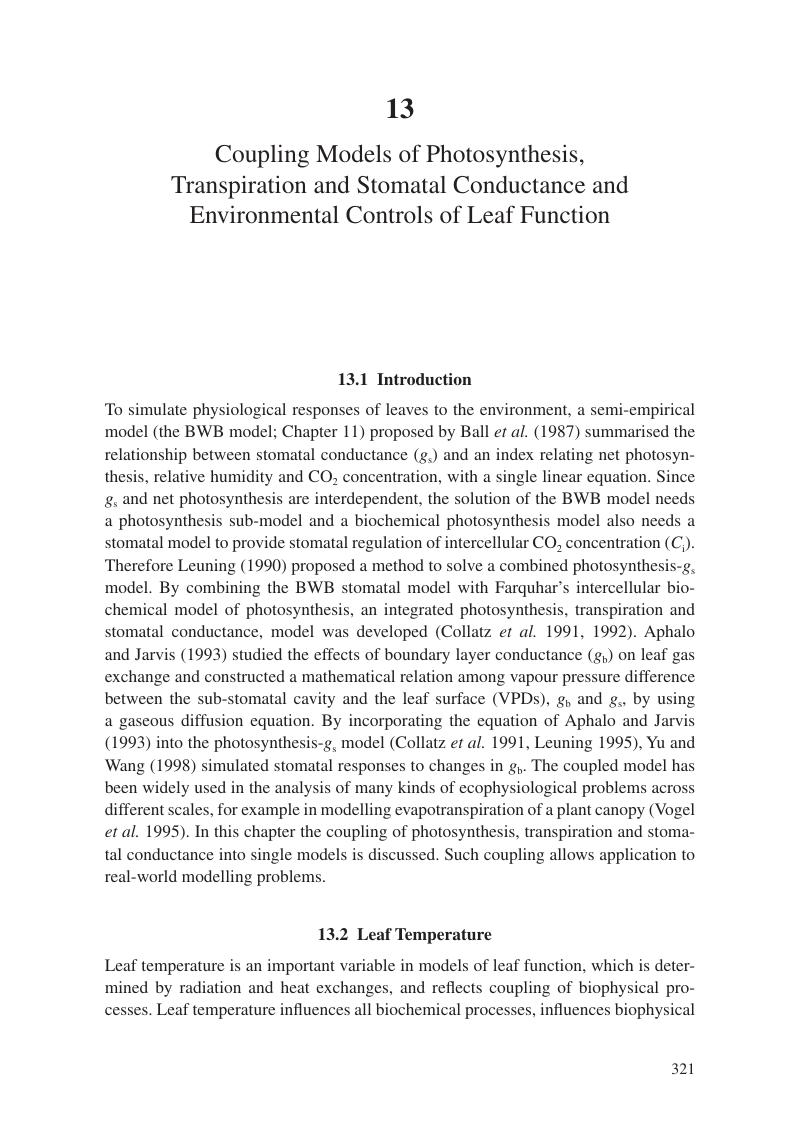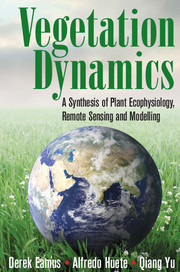Book contents
- Frontmatter
- Contents
- Preface
- Section One Plant Ecophysiology
- Section Two Remote Sensing
- Section Three Modelling
- 8 An Introduction to Modelling in Plant Ecophysiology
- 9 Modelling Radiation Exchange and Energy Balances of Leaves and Canopies
- 10 Modelling Leaf and Canopy Photosynthesis
- 11 Modelling Stomatal and Canopy Conductance
- 12 Modelling Leaf and Canopy Transpiration and the Soil-Plant-Atmosphere Continuum
- 13 Coupling Models of Photosynthesis, Transpiration and Stomatal Conductance and Environmental Controls of Leaf Function
- Section Four Case Studies
- Index
- References
13 - Coupling Models of Photosynthesis, Transpiration and Stomatal Conductance and Environmental Controls of Leaf Function
from Section Three - Modelling
Published online by Cambridge University Press: 05 June 2016
- Frontmatter
- Contents
- Preface
- Section One Plant Ecophysiology
- Section Two Remote Sensing
- Section Three Modelling
- 8 An Introduction to Modelling in Plant Ecophysiology
- 9 Modelling Radiation Exchange and Energy Balances of Leaves and Canopies
- 10 Modelling Leaf and Canopy Photosynthesis
- 11 Modelling Stomatal and Canopy Conductance
- 12 Modelling Leaf and Canopy Transpiration and the Soil-Plant-Atmosphere Continuum
- 13 Coupling Models of Photosynthesis, Transpiration and Stomatal Conductance and Environmental Controls of Leaf Function
- Section Four Case Studies
- Index
- References
Summary

- Type
- Chapter
- Information
- Vegetation DynamicsA Synthesis of Plant Ecophysiology, Remote Sensing and Modelling, pp. 321 - 344Publisher: Cambridge University PressPrint publication year: 2016

